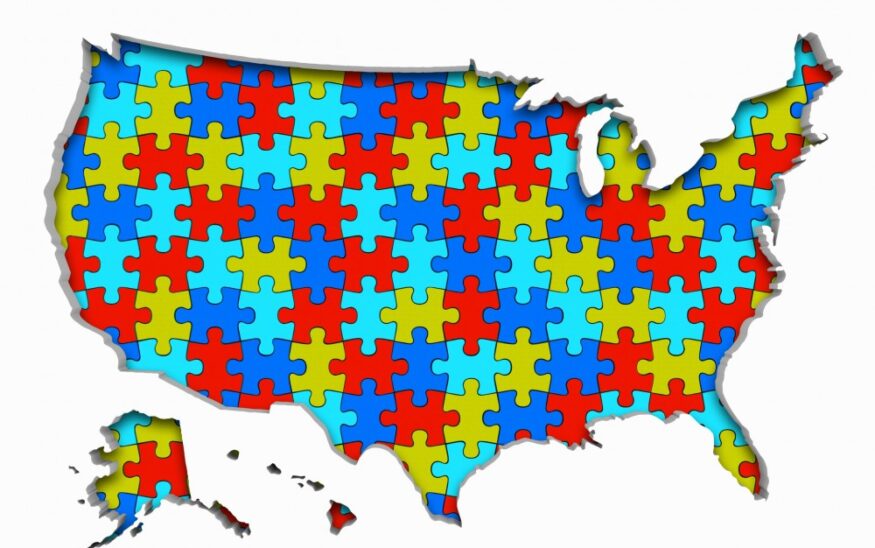What does redistricting have to do with business?
More than you think
Scott Martinez //October 25, 2021//


What does redistricting have to do with business?
More than you think
Scott Martinez //October 25, 2021//
You have likely heard the word redistricting in headlines and news reports over the last year, and you may be wondering what it all means and why you should care. Let’s cover the basics and uncover a few reasons why this process might impact your business.
Redistricting Basics
Redistricting is the term used to describe the process of redrawing political district boundary lines to equalize the population amongst all districts. States are made aware of the changes in a population through the U.S. Census, which the Census Bureau conducts once a decade. The Census Bureau communicates to each state the new official tally of its residents in the year following the Census.
In August of this year, we learned Colorado’s population grew by nearly 750,000 people to a total of 5,750,000. The growth in Colorado’s population was uneven, as most of the increase happened along the front range on the I-25 corridor between Fort Collins and Colorado Springs.
Colorado’s congressional and state legislative districts were last redrawn in 2011, and most of the urban and suburban districts’ population swelled by up to 35% over the past decade, while at the same time, many of the rural Colorado districts were stagnant or even lost people. That means that the weight of a vote in an urban district carried about 1/3 of the weight of a rural community. The redistricting process resets the political boundaries to even out the population and better align with the principle of one-person, one-vote.
In the best light, redistricting gives people the opportunity for reflection on how to geographically organize to best influence policymakers on the issues facing our families and businesses. In the worst light, redistricting can be a political power-grab by politicians who want to pick their constituents instead of constituents selecting them.
When people hear the word “redistricting,” the term “Gerrymander” usually follows. The genesis of the word Gerrymander came from the 1812 redistricting of the Massachusetts State Senate under then-Governor Elbridge Gerry. Governor Gerry contorted the shape of the districts to give himself a partisan political advantage, which the local newspapers satirized as looking like salamanders–coining the bizarre-shaped districts “Gerry-manders.” We now consider outlandish district drawing for political gain a Gerrymander.
Colorado’s New Voter-Approved Laws
In an effort to limit Gerrymandering, Colorado voters passed Constitutional Amendments Y and Z in 2018. The new laws strip the redistricting process from political leaders in the legislature and creates a new Congressional Redistricting Commission comprised of members of the general public tasked with drawing maps. The new law also updates the state legislative redistricting process, which has used a commission for the past 40 years. The updates directed non-partisan Commission staff to draw maps for Commission consideration. The Commission members were selected from applications from the general public, and elected officials and lobbyists were prohibited from serving.
The law requires the Commissions to take in public testimony on proposed maps, and the Colorado Supreme Court gets a final review to ensure the maps meet legal requirements. The new redistricting laws also put strong ethics laws into place, requiring disclosure of paid efforts to influence the Commissions through the public testimony process.
Why Does Redistricting Matter to Your Business
Redistricting is essential to your business both at the local and at the macro-level.
I’ll go out on a limb and guess that in your business, relationships matter. Whether you actively engage in policy or not, one of the most significant relationships your company should have is the relationship with your state legislators and member of Congress. Policy impacts business in countless ways, from employment laws to sector-specific policies. Your legislator should be your crucial advocate for issues of public policy at the state capitol, as well as a primary liaison with the federal government. Redistricting has the potential to upend those relationships.
As of today, your elected representatives will be running for office in newly configured districts. Your opportunity in redistricting is to take advantage of your representative’s desire to know, understand and represent this freshly configured district. For example, a state representative may have represented Wheat Ridge and Arvada for the past five years, but the new maps now represent Wheat Ridge and Golden. As a Golden business owner, your representative is eager to know her new turf and wants to know the issues important to your business. The representative and her challenger are seeking your support and insights with new urgency. Now is the best time to take a step back and ask who you want to work with and who will best represent your needs. This eagerness is shared on the statehouse, state senate, and congressional levels.
This is also a timely opportunity to work with your trade association or chamber to understand the statewide or national impacts of the new maps. In addition to getting to know your legislator, consider the makeup of the leadership of the statehouse. Even if your state legislator may stay the same after redistricting, many of the state’s representatives will represent different cities and towns. Now is the time for your company or association to flex some muscle and provide focused energy on critical priorities for your industry and provide much-needed insight to legislators.
Scott Martinez drew the congressional maps Colorado adopted in 2001 and 2011. He is an attorney and the founder of Martinez and Partners, LLC.
























